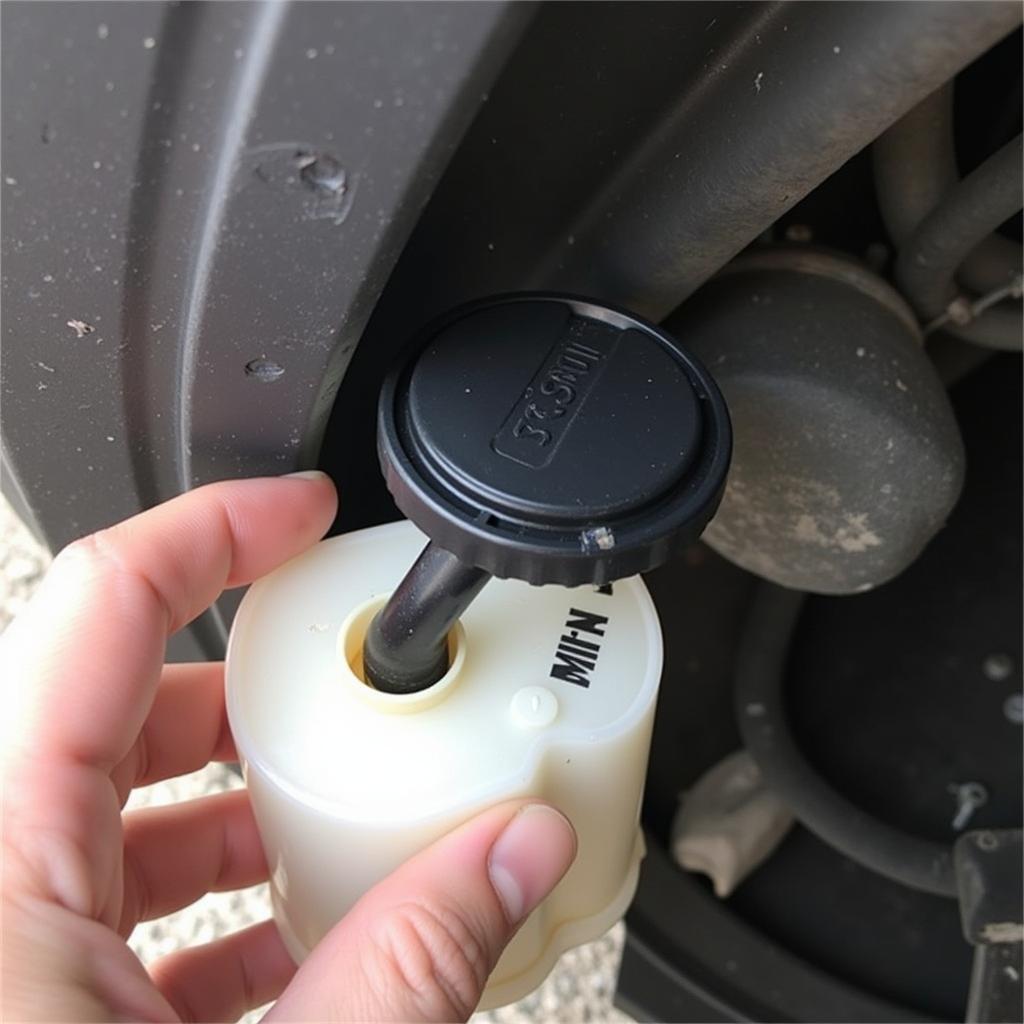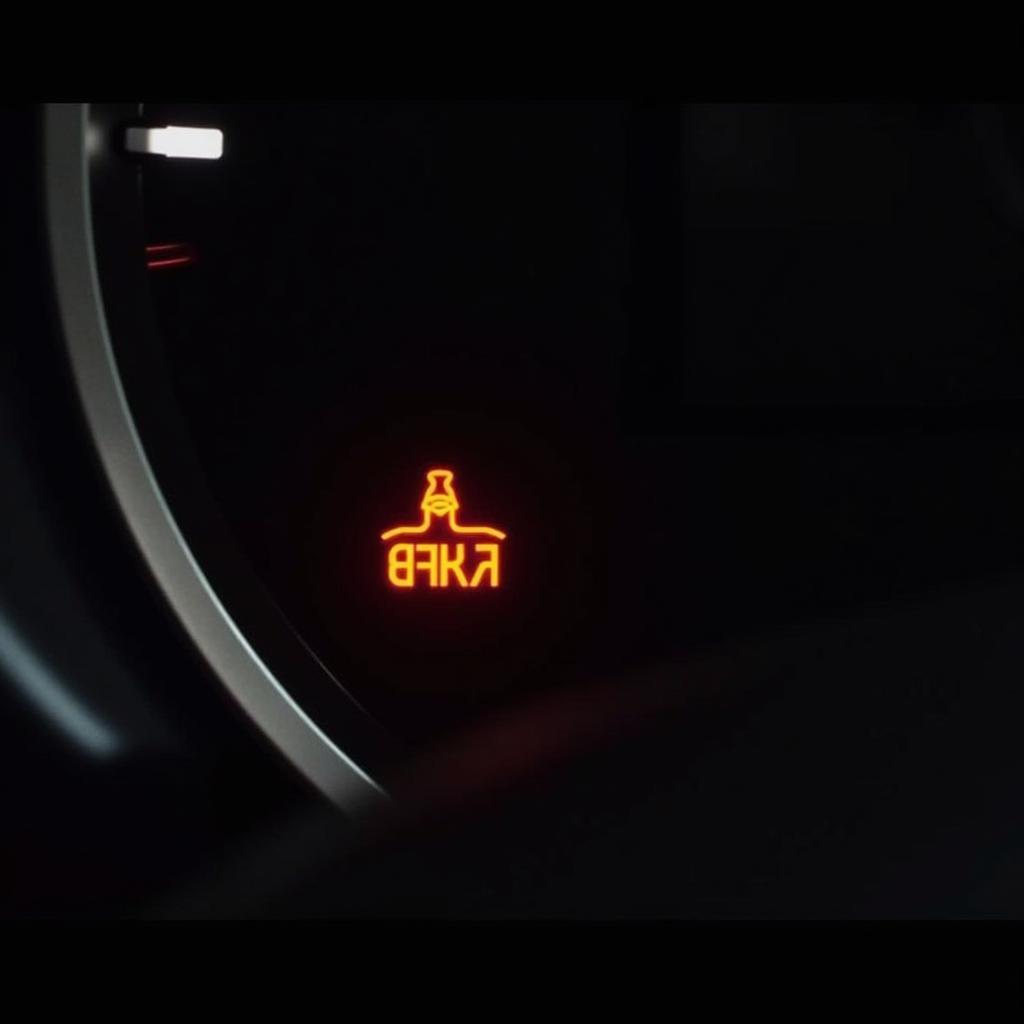A brake warning sign on your dashboard can be a scary sight. It means there’s something wrong with your car’s braking system, and you need to address it immediately. This warning light can appear due to a variety of reasons, ranging from minor issues to major malfunctions. Understanding the possible causes behind this warning light can help you assess the situation and take appropriate actions.
Common Reasons for a Brake Warning Light
Several reasons can trigger the brake warning light on your dashboard. These include:
1. Low Brake Fluid
The most common reason for this warning light is low brake fluid. Brake fluid is essential for the proper functioning of your braking system, and it can leak over time. When the fluid level drops below a certain point, the warning light illuminates, indicating a need for fluid replenishment.
Quote from expert: “If you see the brake warning light, always check your brake fluid level first,” says expert mechanic, John Smith.
2. Faulty Brake Pad Wear Sensor
Modern vehicles come equipped with brake pad wear sensors that trigger the warning light when the brake pads are worn down. These sensors are typically installed on the brake pads, and they alert you when it’s time to replace them.
3. Malfunctioning Brake System Components
The brake warning light can also illuminate due to malfunctions in other brake system components, such as:
- Brake caliper issues: A faulty brake caliper can cause uneven wear on the brake pads and trigger the warning light.
- Brake line issues: Leaking or damaged brake lines can result in a loss of brake fluid and activate the warning light.
- Brake booster issues: A faulty brake booster, which helps you apply pressure to the brakes, can also cause the warning light to turn on.
4. Electronic Parking Brake Malfunction
Vehicles with electronic parking brakes (EPB) have a dedicated warning light for the system. A malfunctioning EPB can trigger this light, indicating potential issues with the system.
Diagnosing the Problem
If you see the brake warning light on your dashboard, it’s important to diagnose the issue promptly. Here’s what you can do:
-
Check the brake fluid level: Open the hood of your car and locate the brake fluid reservoir. Check the fluid level and top it off if necessary. Make sure to use the correct type of brake fluid as specified in your owner’s manual.
-
Inspect the brake pads: If the brake fluid level is adequate, the issue might be related to worn-out brake pads. Check the brake pad wear sensors, and if they are activated, it’s time to replace your brake pads.
-
Look for leaks: Inspect the brake lines for leaks or any signs of damage. If you find leaks, consult a mechanic for repairs.
-
Use a code reader: For electronic issues, use a code reader to diagnose the problem. This can help identify specific faults related to the braking system.
Resolving the Issue
Once you have diagnosed the cause of the brake warning light, it’s time to address the problem. Here are some solutions:
-
Replenish brake fluid: If the issue is low brake fluid, replenish it with the correct type of fluid as per your car’s manual.
-
Replace brake pads: Replace your brake pads if the wear sensors are activated.
-
Repair or replace brake system components: If the issue stems from a faulty brake caliper, brake lines, or brake booster, consult a mechanic for repairs or replacement.
-
Address EPB malfunctions: If your EPB system is causing the warning light, consult a mechanic for diagnosis and repairs.
Things to Remember
- Never ignore the brake warning light: This light is a crucial indicator of potential safety hazards and should never be ignored.
- Don’t attempt DIY repairs unless you’re experienced: If you’re not comfortable with brake system repairs, consult a certified mechanic for help.
- Regular maintenance is key: Routine brake inspections and maintenance can prevent unexpected problems and keep your braking system in optimal condition.
FAQ
Q: Can I safely drive my car with the brake warning light on?
A: It’s not recommended to drive with the brake warning light on as it indicates a potential safety hazard. The issue needs to be addressed as soon as possible.
Q: What happens if I ignore the brake warning light?
A: Ignoring the light can lead to further damage to your brake system, which can result in brake failure and a serious accident.
Q: How often should I get my brakes inspected?
A: It’s recommended to get your brakes inspected at least once a year or every 12,000 miles, whichever comes first.
Q: What is the cost of replacing brake pads?
A: The cost of replacing brake pads can vary depending on your vehicle model, the type of brake pads you choose, and the labor costs in your area.
Q: Can I disable the brake warning light myself?
A: It’s not advisable to disable the brake warning light as it can mask underlying issues. It’s important to address the cause of the warning light and ensure your braking system is working properly.
Quote from expert: “Never try to disable a warning light without understanding the root cause,” advises veteran mechanic, Sarah Miller.
Conclusion
A brake warning light on your dashboard is a serious matter and should be addressed promptly. Understanding the potential causes and taking the right steps to diagnose and resolve the problem can help keep you and your passengers safe. Remember, prioritizing brake system maintenance is crucial for safe and reliable driving.


